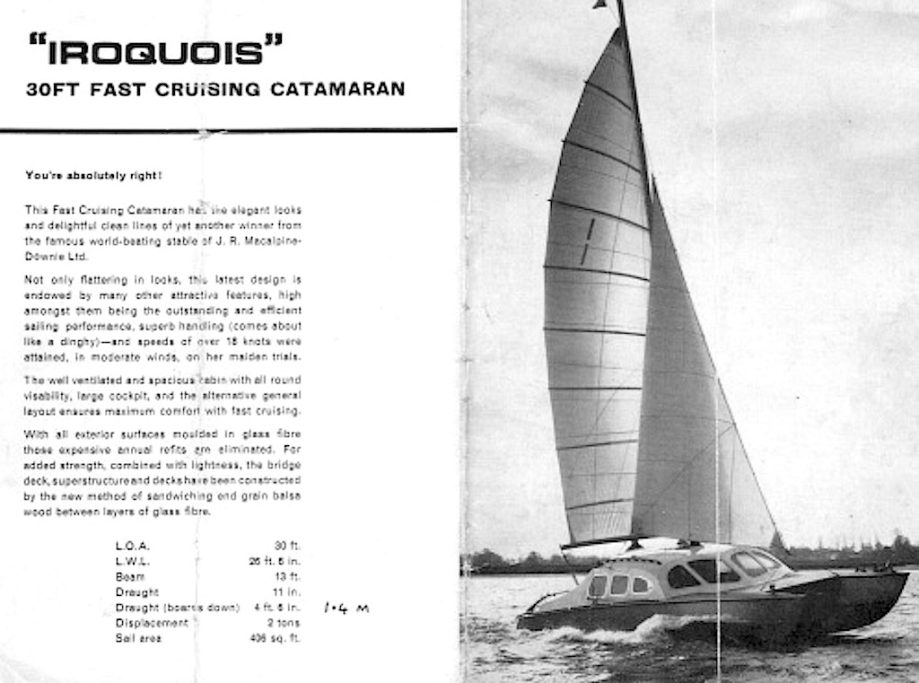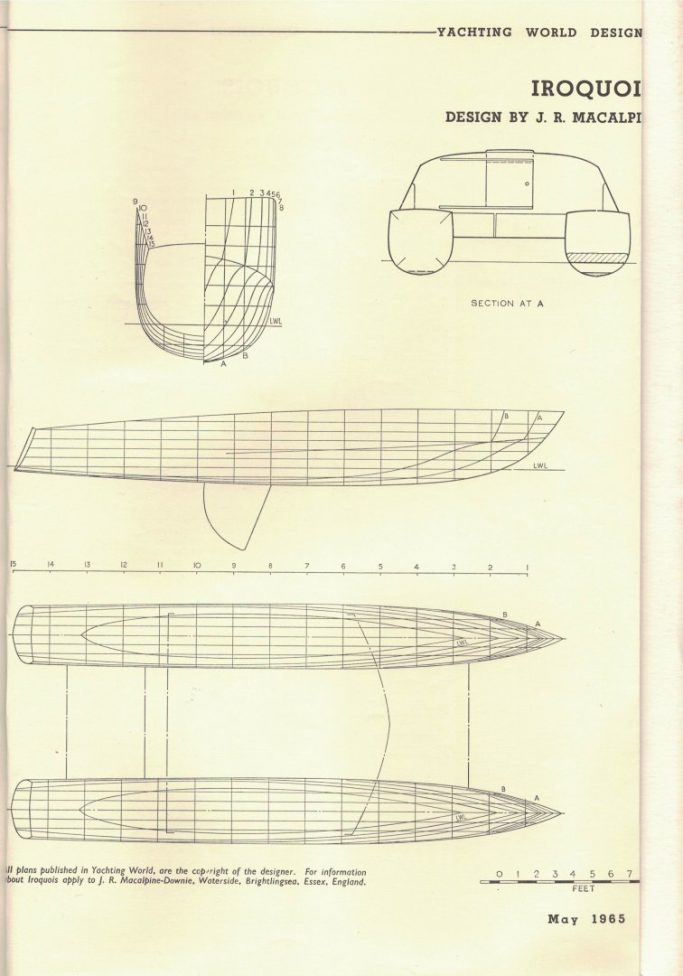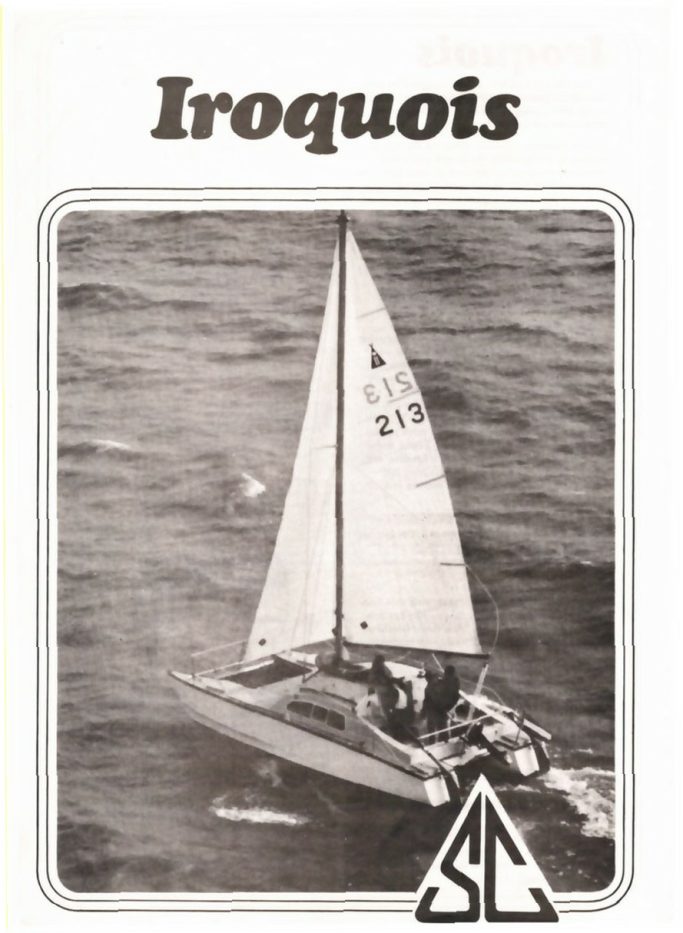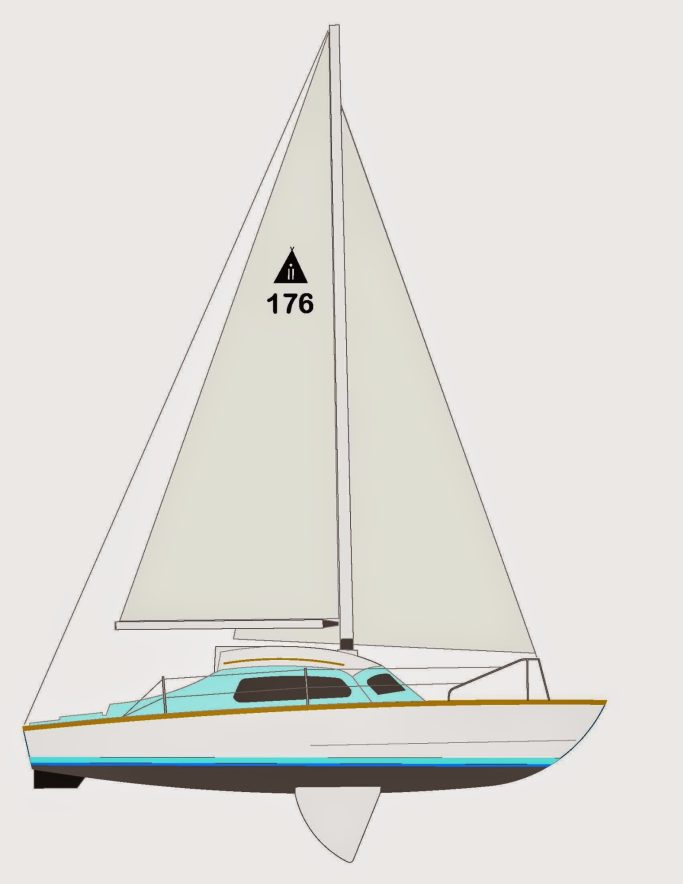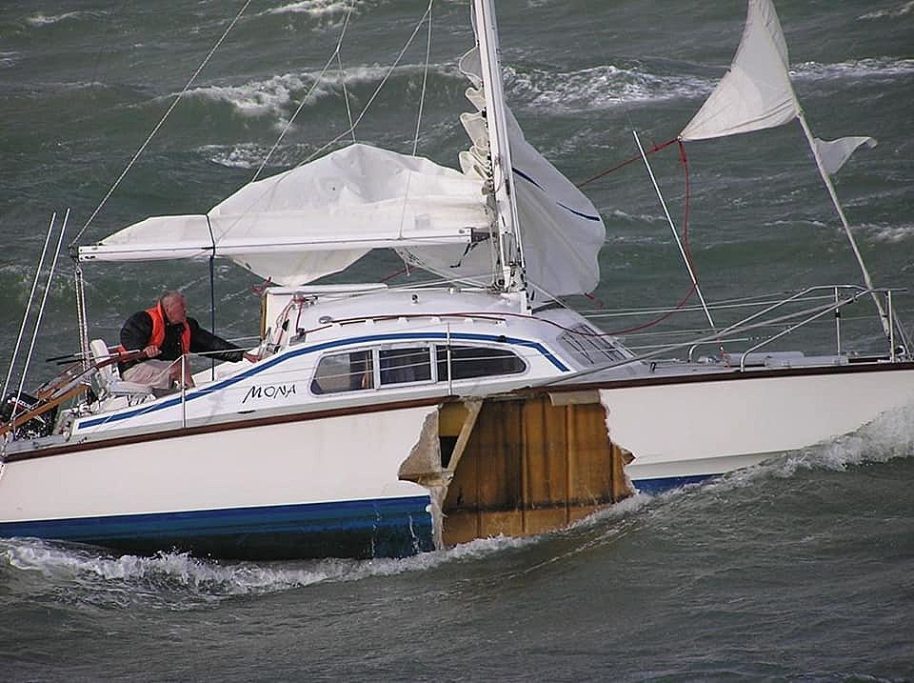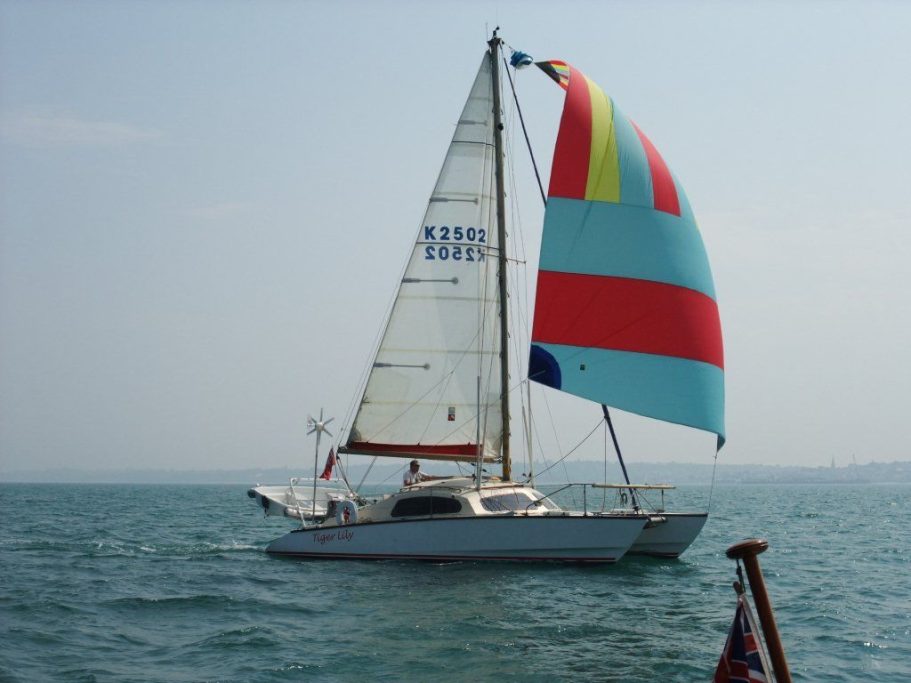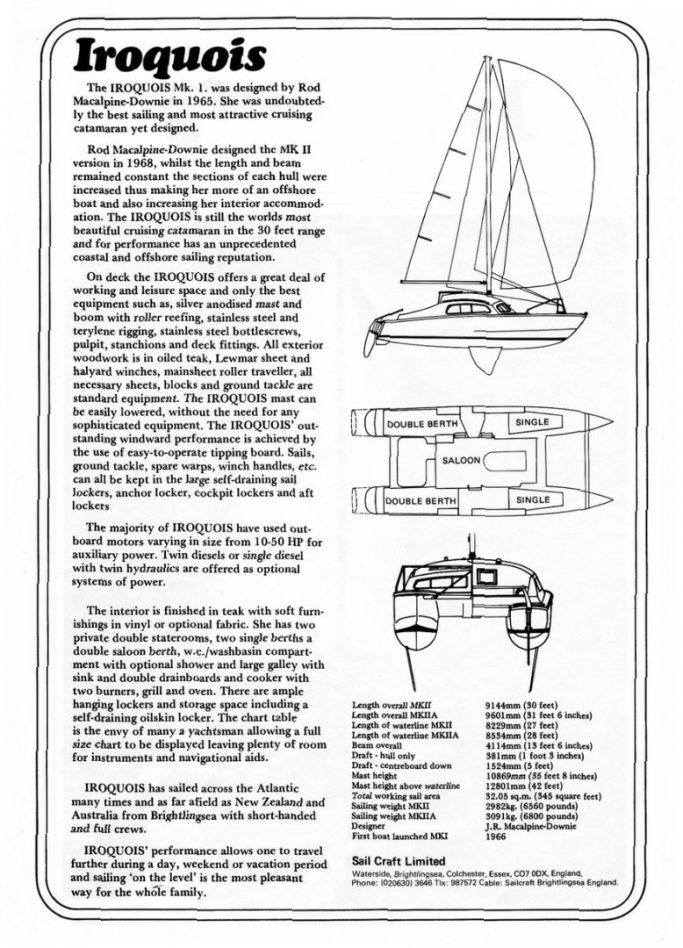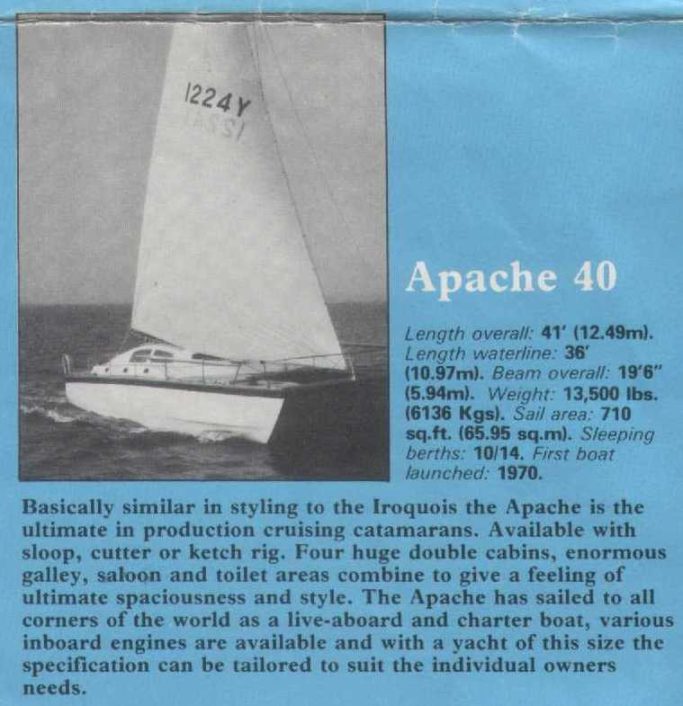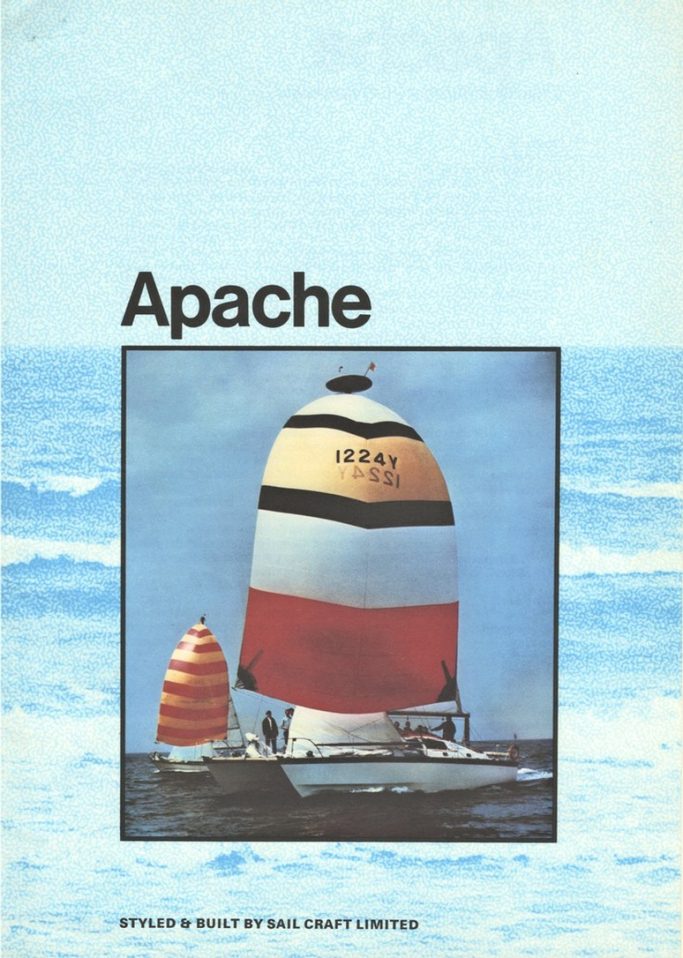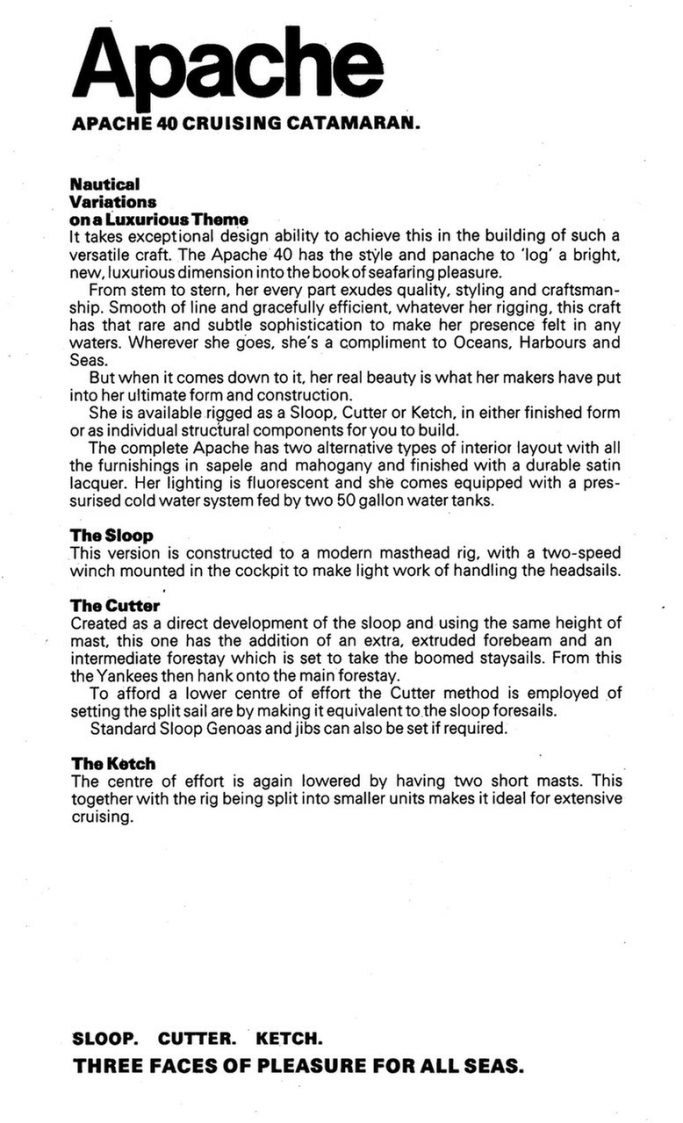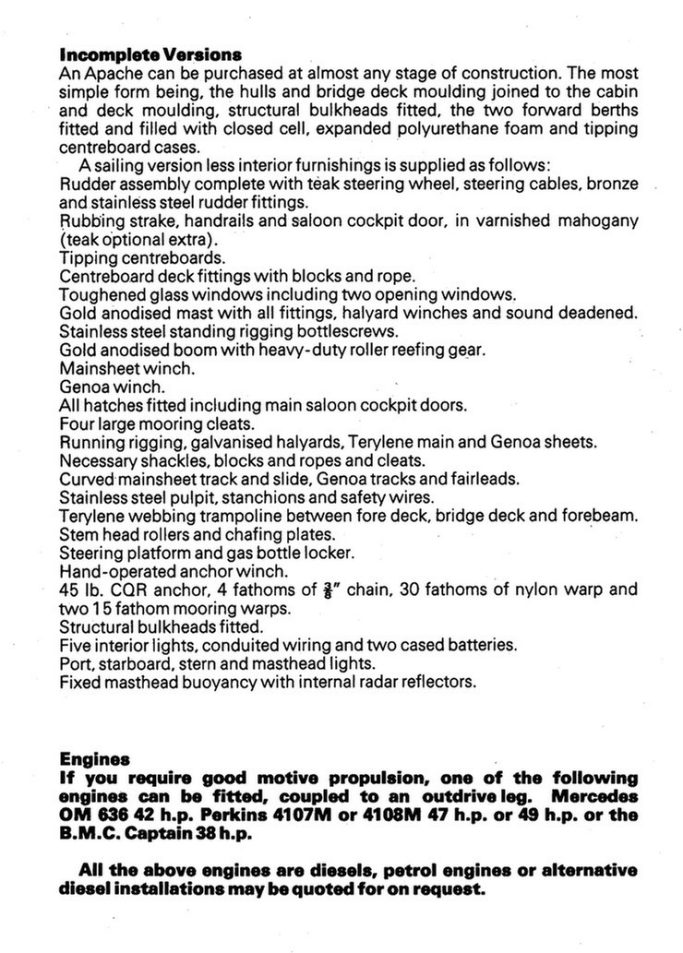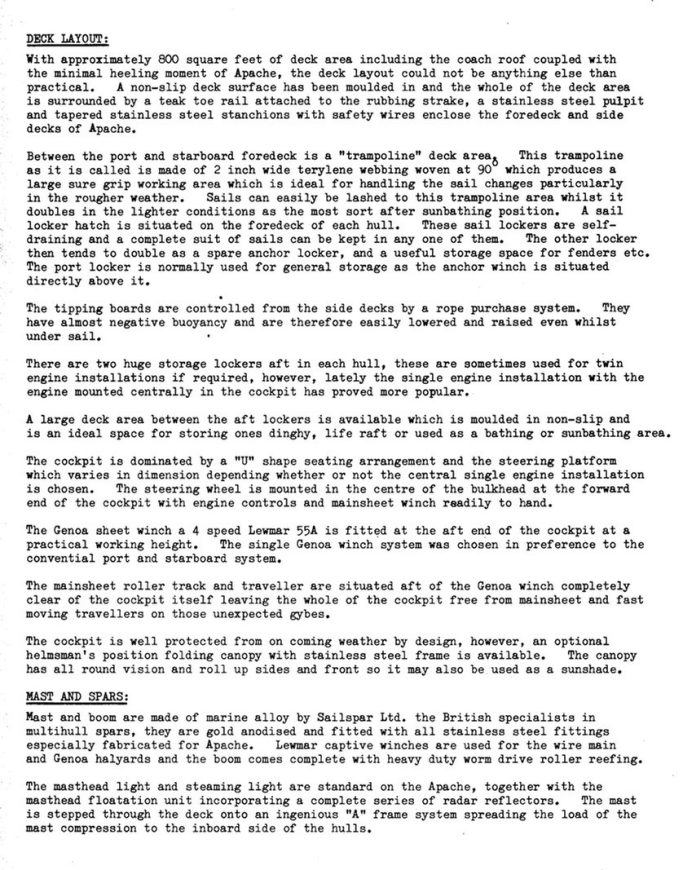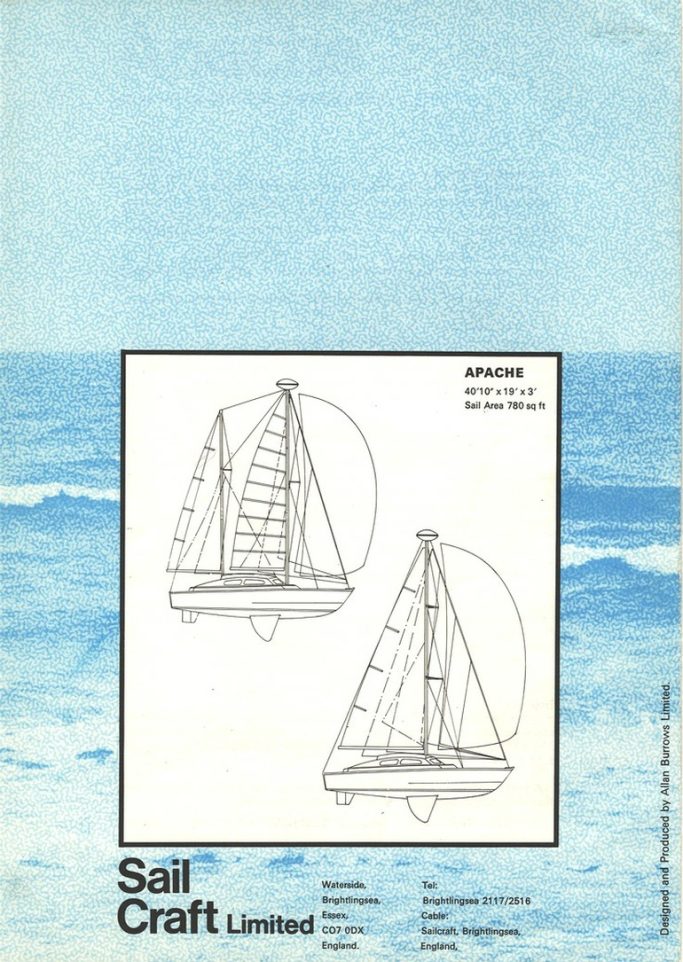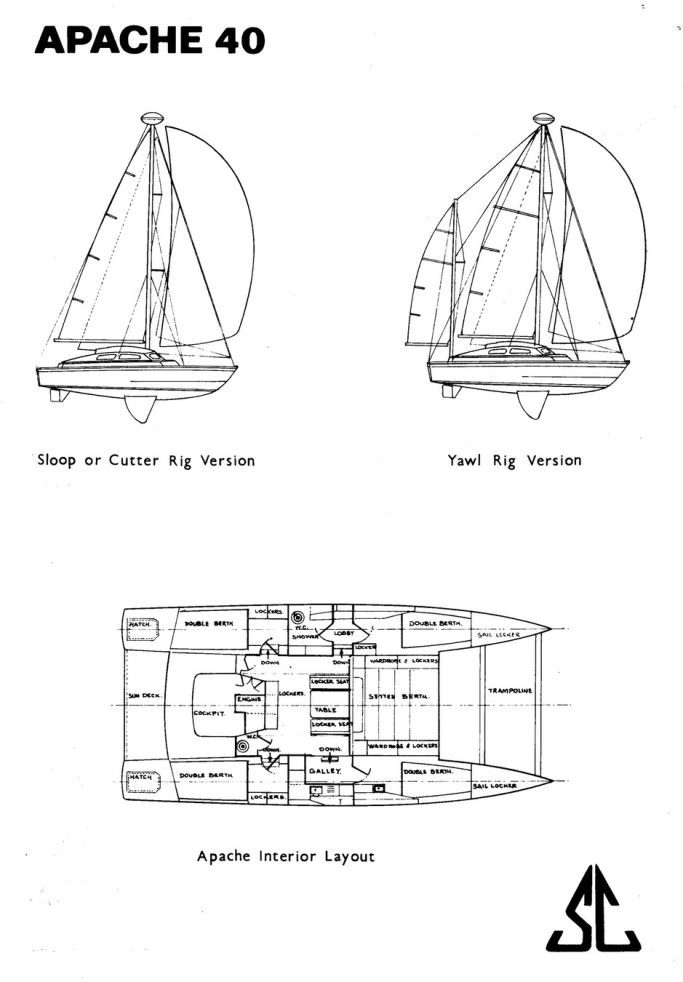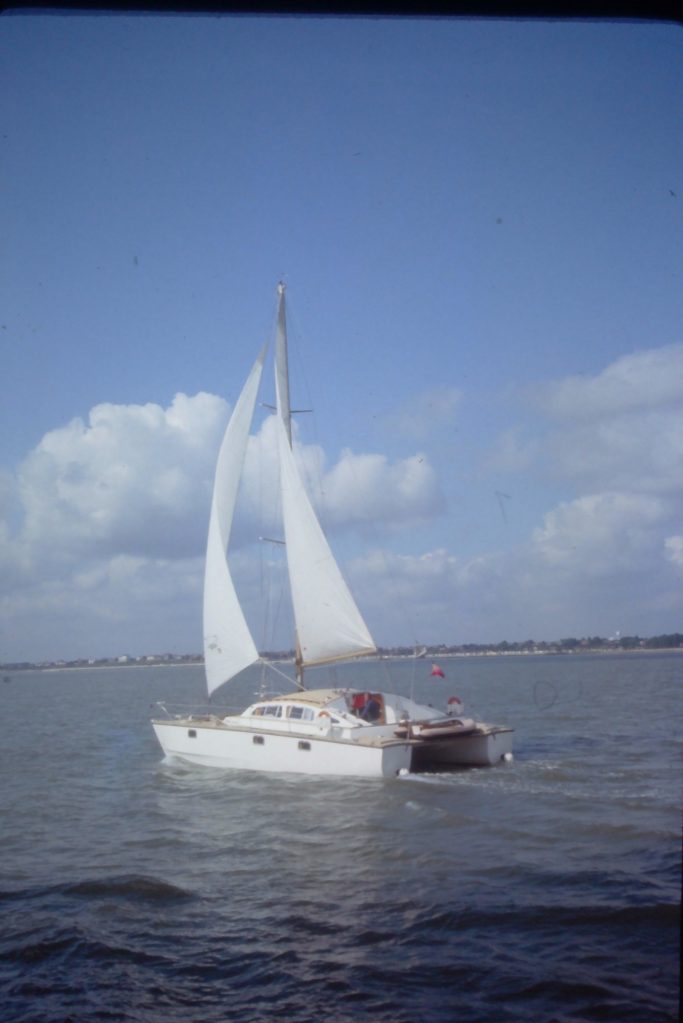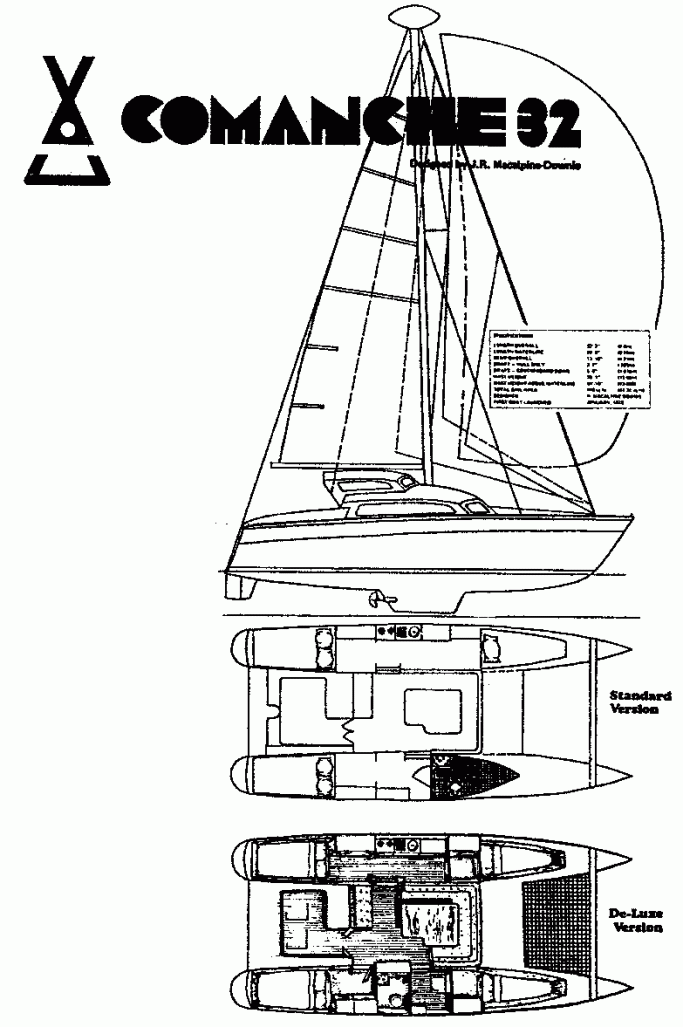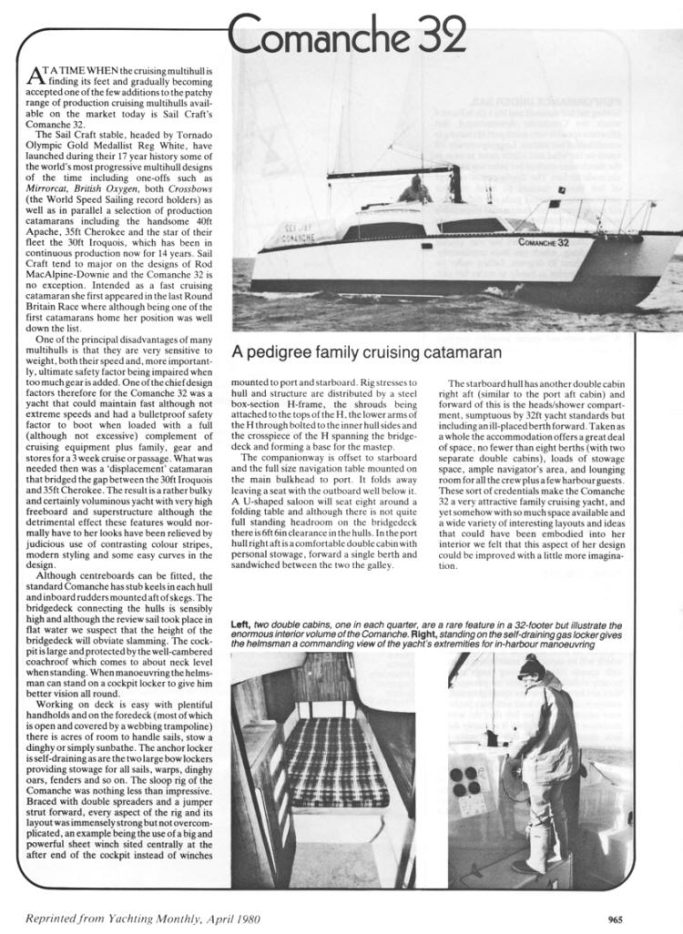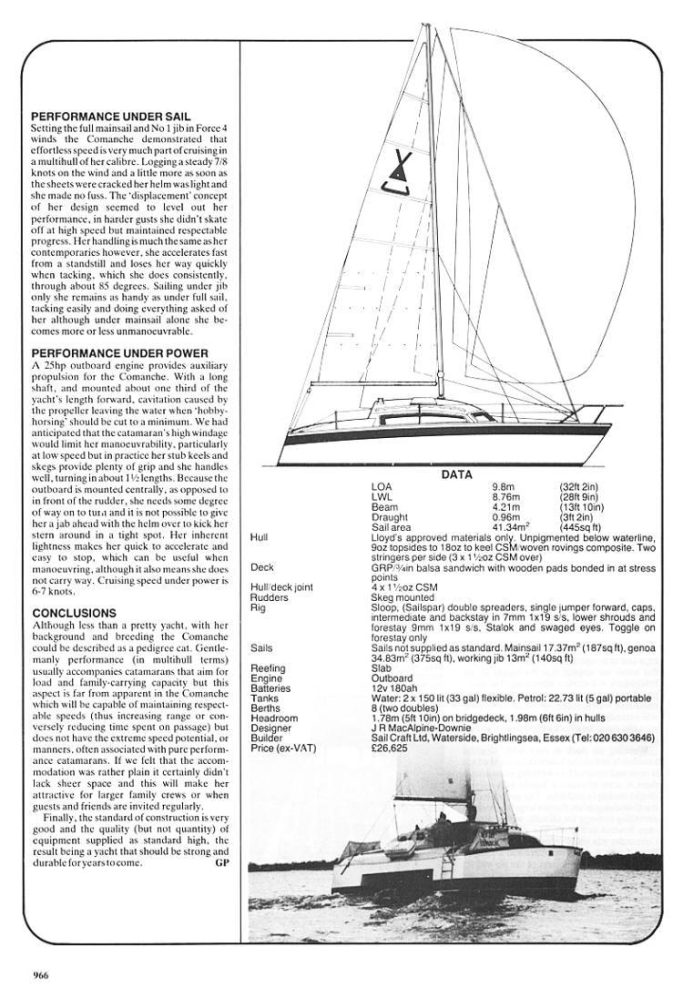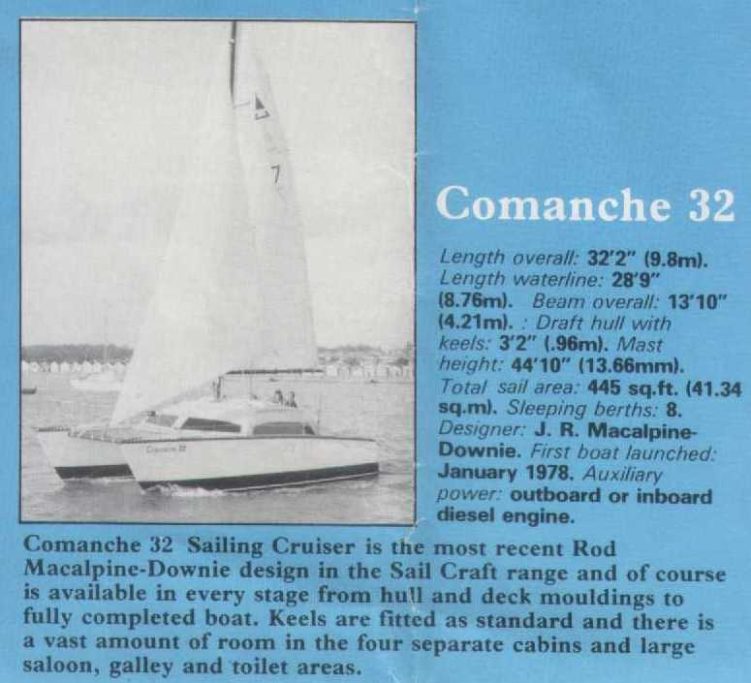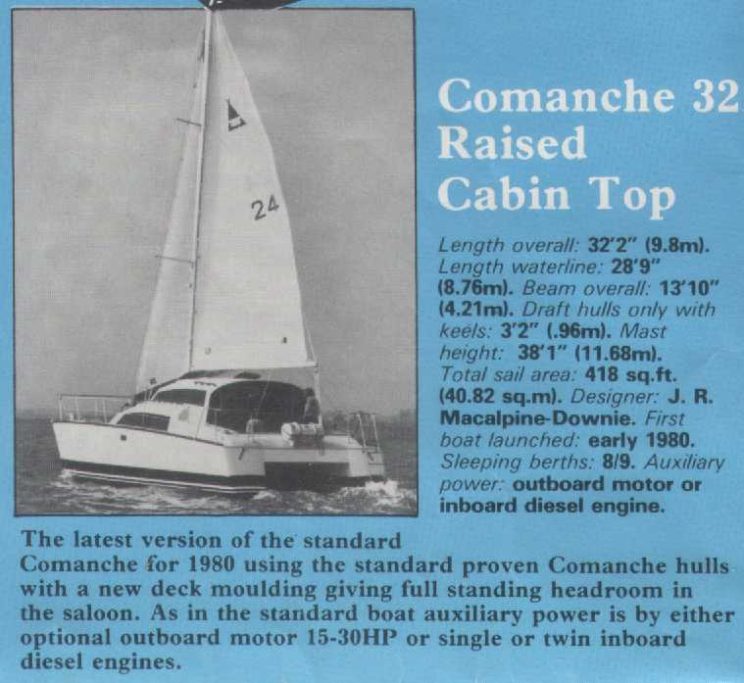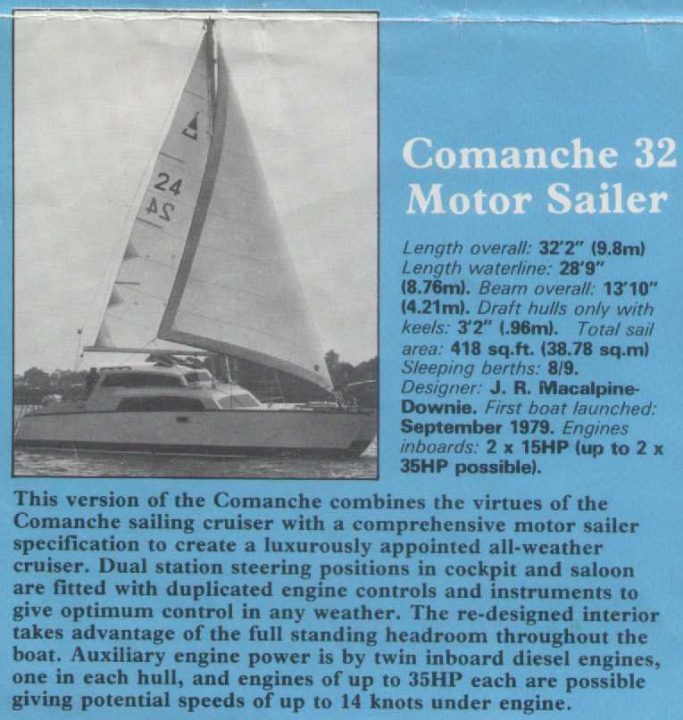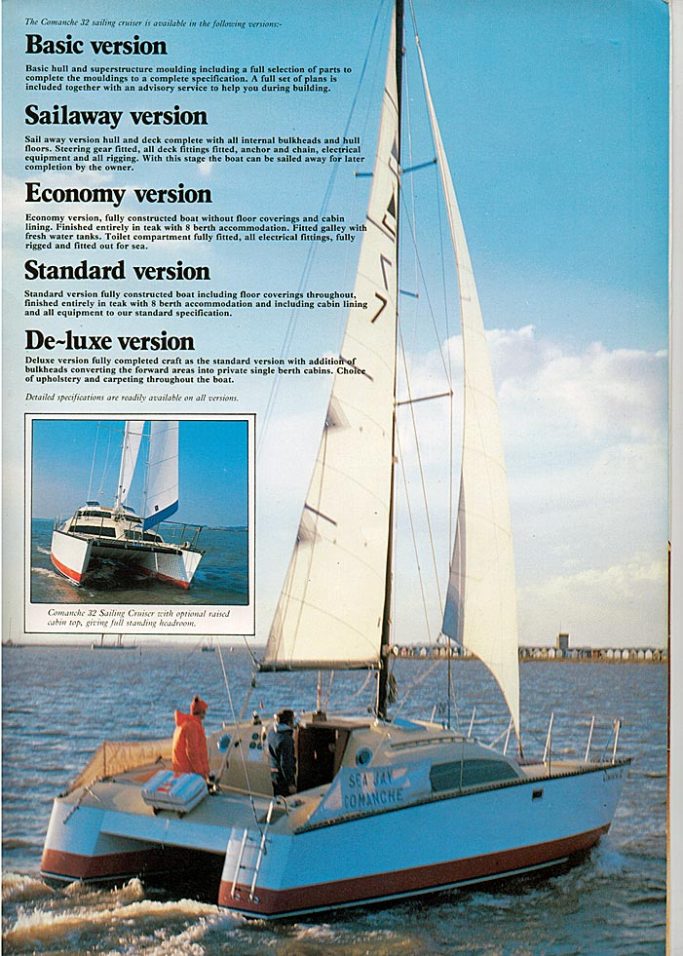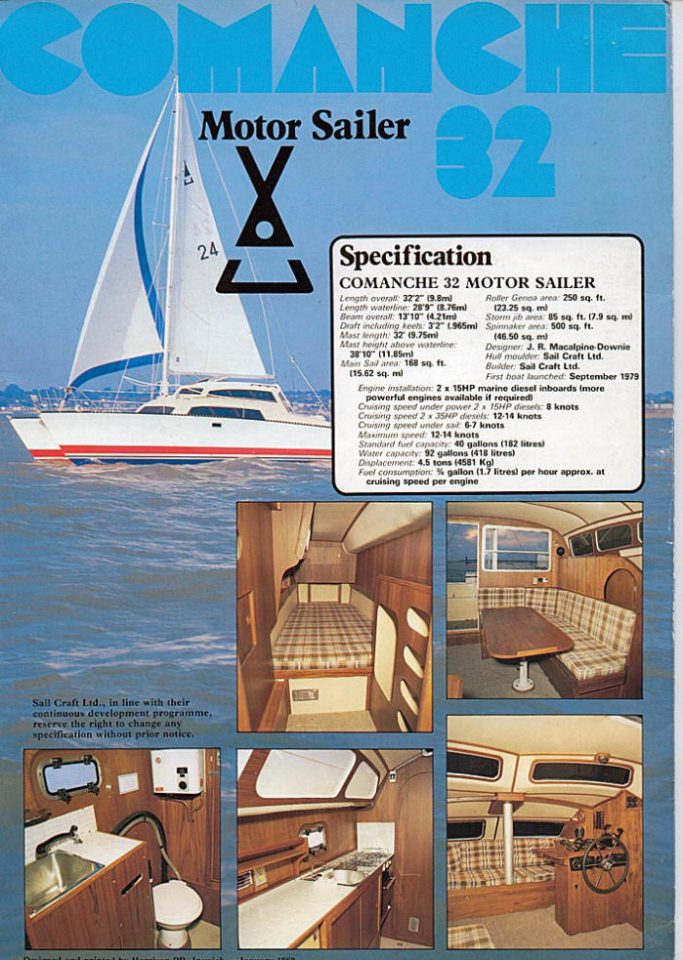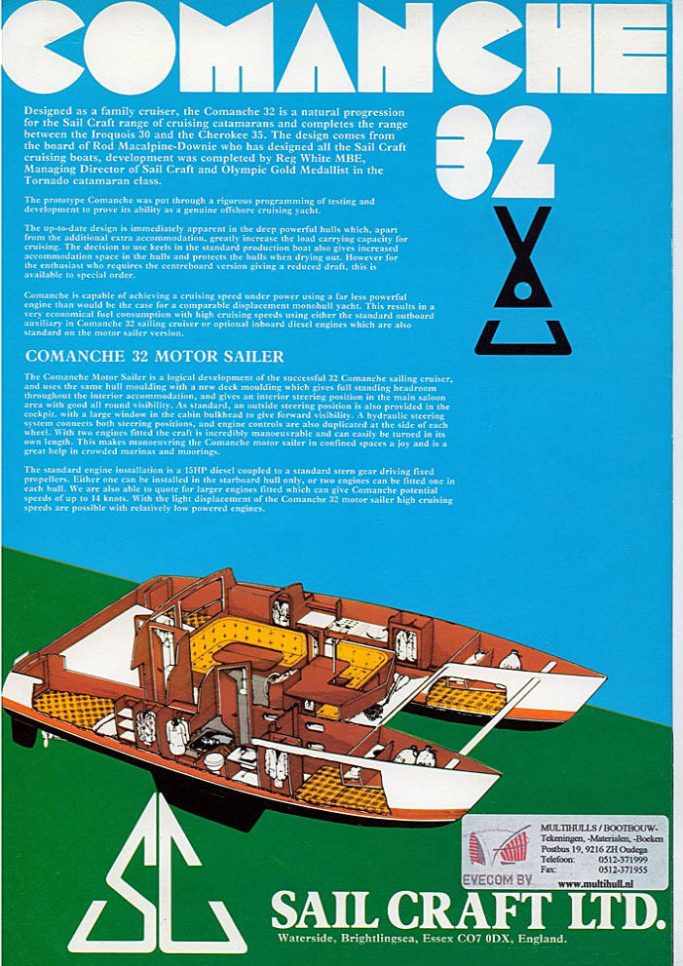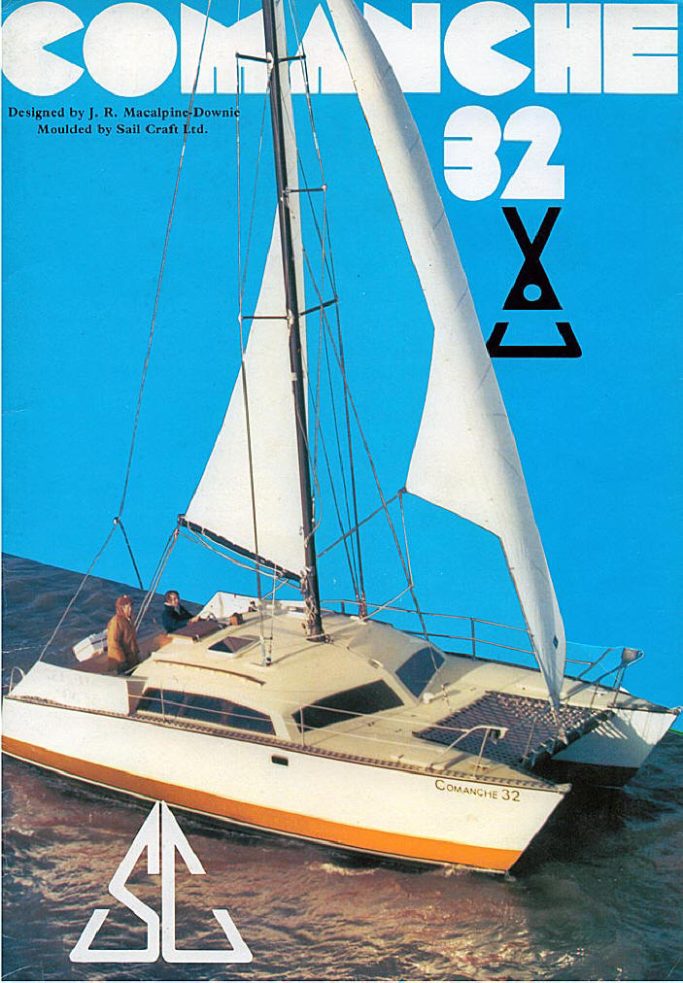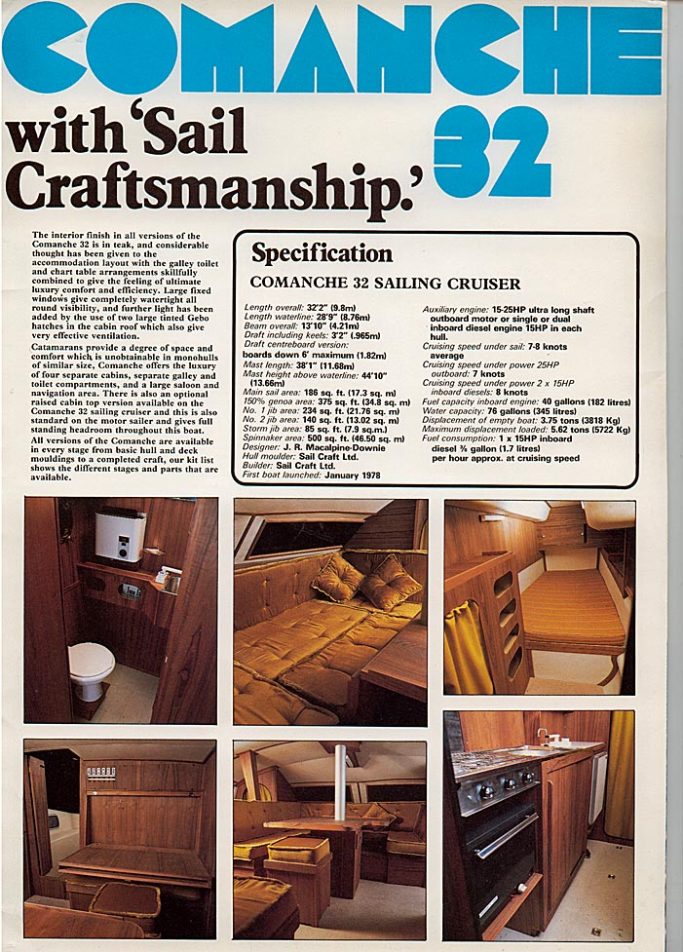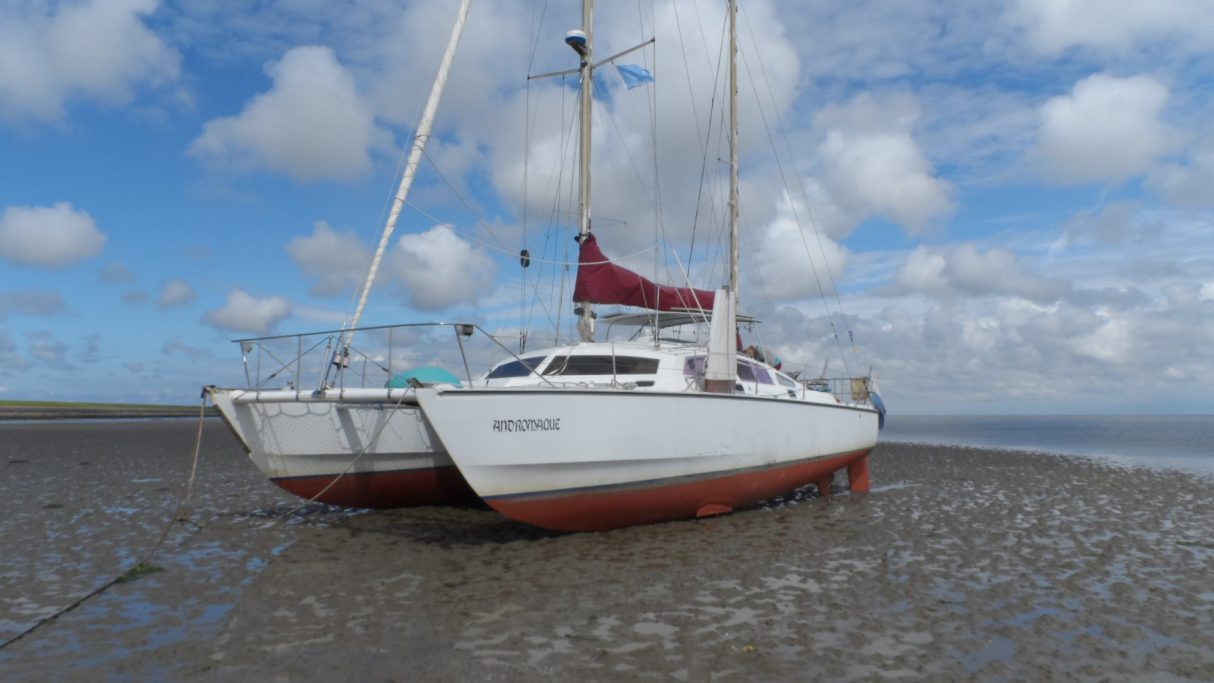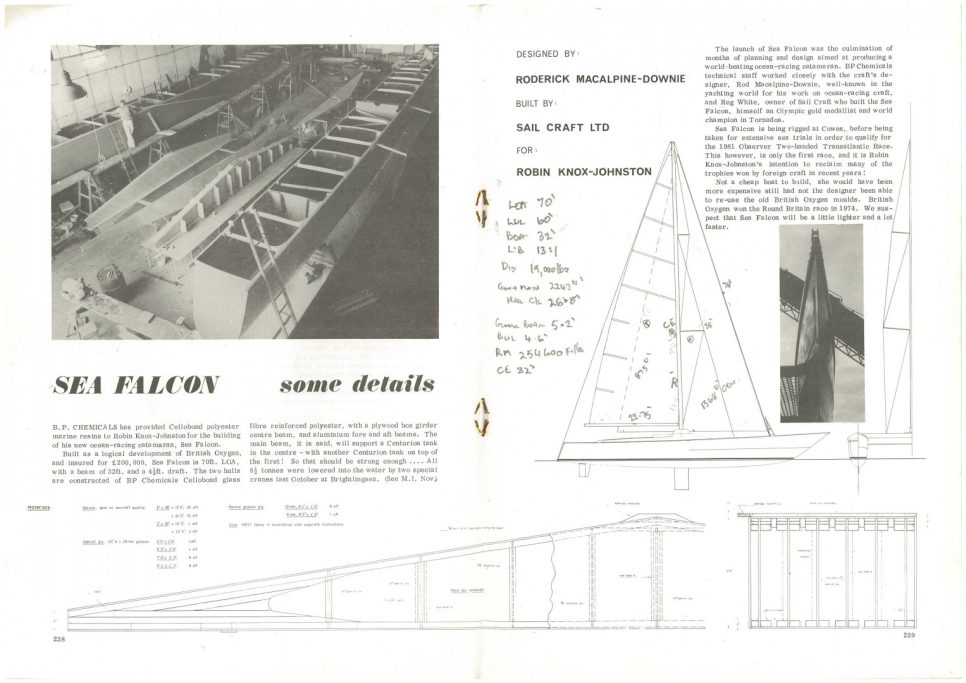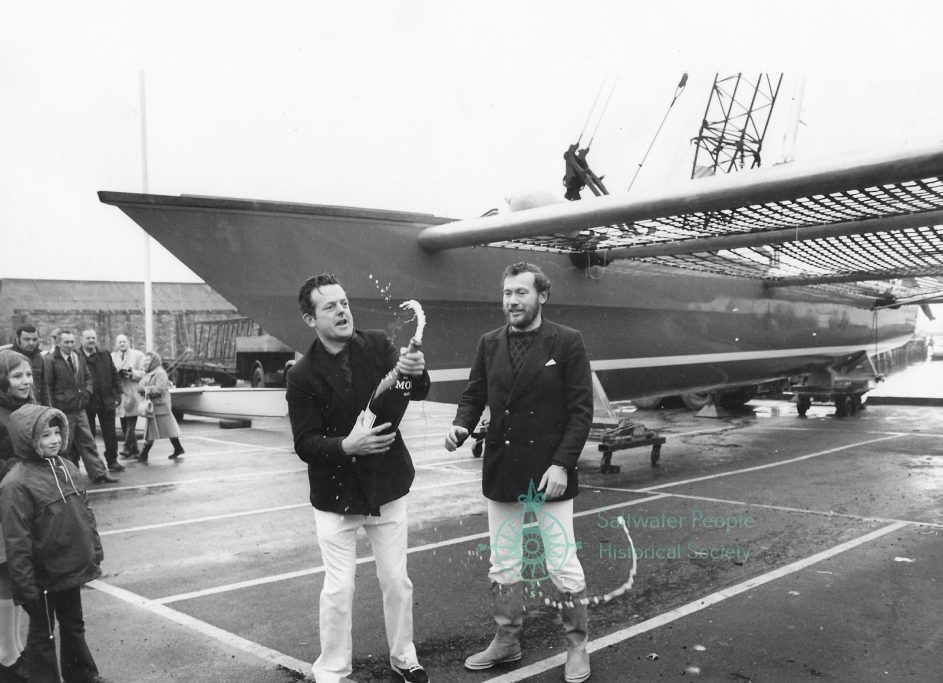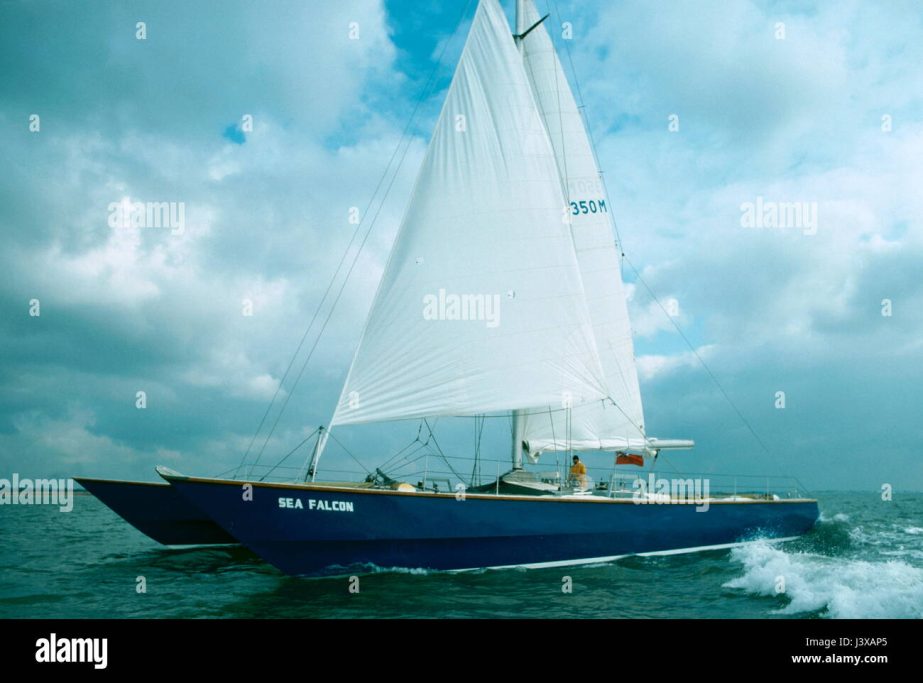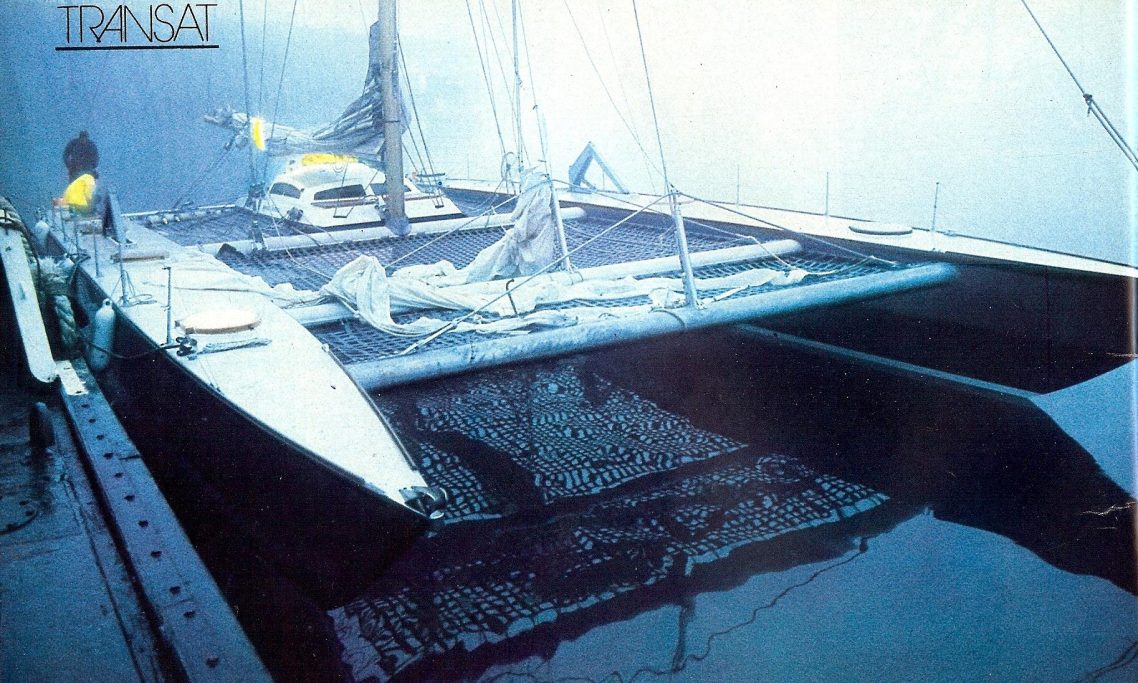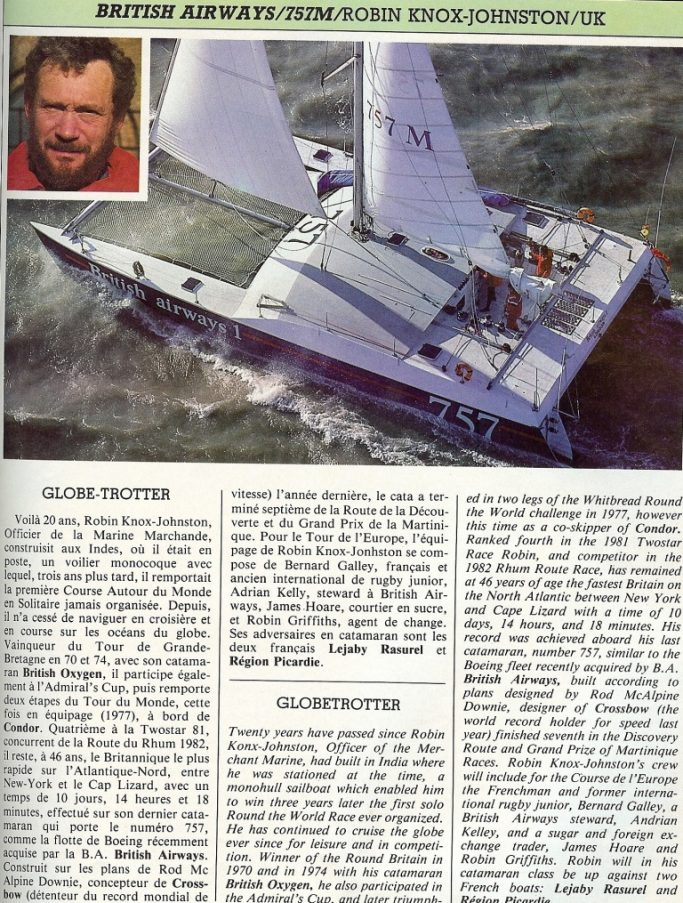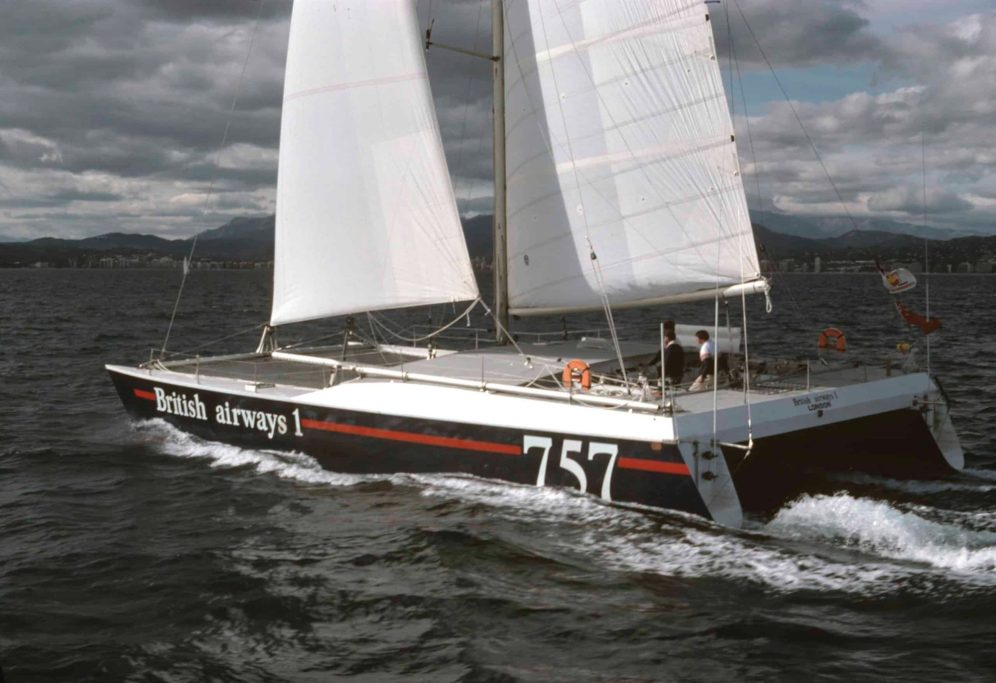Sailcraft
Sailcraft Limited was a company established in Brightlingsea, Essex by Olympic Catamaran Sailor Reg White. The business started manufacturing the Tornado dinghy/day sailing catamaran that Reg White was to sail successfully as an Olympic Champion.
Teaming up with designer Roderick McAlpine Downie (who designed many dinghies and sailing boats that sold across the World in their thousands) they developed a very successful range of offshore catamarans starting with the 1965 Iroquois (30 feet).
There were two basic versions of the Iroquois, a Mark 1 and Mark II. Then there was a Mark IIA with stretched hulls and inboard engines. After production ceased the moulds ended up in America where the design briefly lived on as the Chieftain 32. The Mark I designed in 1964 hit production in 1965 and a production boat was sailed in the 1966 Round Britain Race coming third. She was carefully sailed with the crew holding the main sheet almost all the time and using the anchor chain as movable ballast. With narrow overall beam and a highish rig the boat was prone to capsizes which her deep centreboards caused by giving terrific pointing ability and windward performance certainly contributed to by tripping the boat. It was recommended that the cat was sailed with the windward board down and the lee board up in strong winds and seas.
However there were many capsizes because as CSK were discovering unless crews were experienced with sailing catamarans they would react slowly when the windward hull started flying or bear up when the effect was to capsize the boat over the deep lee board. Yet sailed sensibly and with crew and stores aboard other successfully sailed them across Oceans and one later circumnavigated albeit with a much safer lower rig fitted. The idea of the Mark II was that the rig was lower and the higher free board and wider hulls gave better payload and greater stability. Many people were very happy with these boats. There were accidents where the practice of sailing with the windward board down wrecked the catamaran because the whole board ripped the outer hull apart. being designed for the force to be applied inwards where the case was strengthened. This led to the loss of one family boat on a circumnavigation in the Indian Ocean. Many Iroquois still sail around the World too and as long as crews are aware of the boats stability levels and reduce sail sensibly they remain fun boats.
In 1970 the 40 foot Apache was launched and made head lines for all the wrong reasons sailed by Mike Butterfield in the 1970 Round Britain Race. This superbly spacious cat was raced very light missing most of the cabin furniture and with her massive centreboards down was beating to windward carrying full sail in a Force 9 gale which was frankly reckless. This poor seamanship gave multihulls a very bad name as the establishment critics gloated over the inevitable capsize. Holding her tight to the wind and feathering the main in gusts Butterfield lost concentration and the big cat filled her sails in steep seas and fell over. It was a combined wave and wind capsize. It may have been that having such large centreboards to give scintillating performance upwind was not a good idea. It was in the English Channel but in 1976 the big Kelsall trimaran Seiko/RTL also stopped going up steep waves in 50 knot winds in the Atlantic and capsized in the same way.
Mike and his crew were rescued and the uninsured boat destroyed by Trinity House as a danger to navigation. He replaced her with another Apache that he cruised and raced for many years safely. As a response Reg White and Roderick McAlpine Downie took a production Apache and sailed it across the Atlantic to re-establish the credentials of their creation.
Others have sailed their Apache catamarans all over the World safely. Many continue to sail the World's oceans today.
A 35 foot version (Cherokee) was also successful and later a 46 foot Navaho built on similar lines. The later Comanche 32 was a heavier and much safer boat that again clocked up circumnavigations and is as a second-hand buy still a really good classic sailing boat for cruising in comfort.
Sailcraft built the mighty British Oxygen 70 foot racing catamaran for Robin Knox- Johnstone to win the next RBR. She became Kriter III and later broke up in the 1976 OSTAR. They also designed and built British Airways using similar hulls with a monocoque bridge deck rather than metal beams. As Alison JB she circumnavigated. A third version for Robin Knox Johnston was Sea Falcon which was lost after a collision with a ship off Portugal. Finally McAlpine Downie designed Cross Bow a proa that set speed records. This incredibly talented and extremely nice man was working on an even faster one when sadly he died at a young age.

